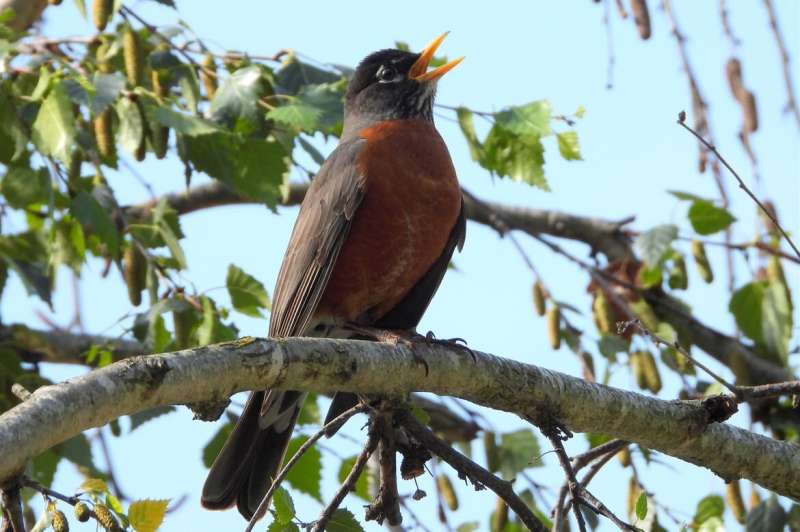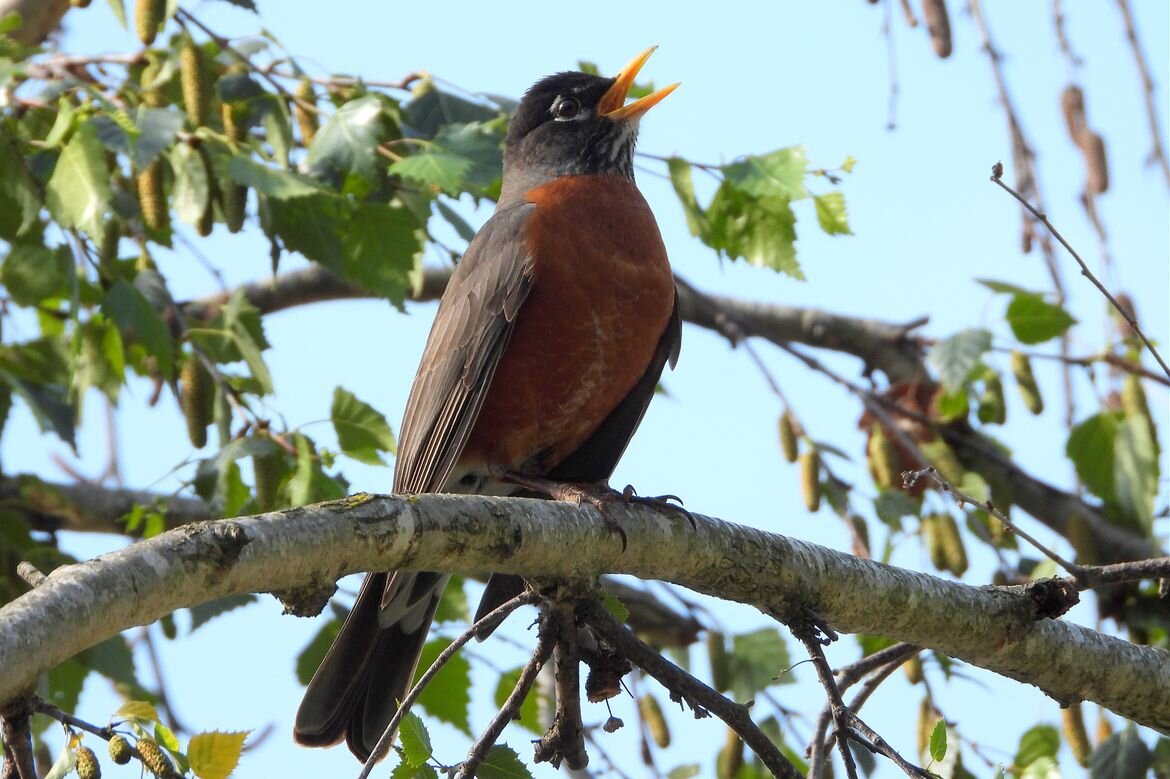
A UCLA-led study published today reveals that migratory birds across North America are getting smaller, a change the researchers attribute to the rapidly warming climate.
The research, published in Nature Ecology and Evolution, found that over the past three decades, the body mass of 105 bird species in the analysis declined by an average of 0.6%—but by as much as 3.0% in some species. Tree swallows, for example got 2.8% smaller, American robins got 1.2% smaller and downy woodpeckers got 2.2% smaller.
Those figures might not sound alarming at first. But in evolutionary terms, they are dramatic changes over a very short time.
The paper reveals how strongly temperature affects physical characteristics of animals, said Casey Youngflesh, a UCLA ecologist and lead author of the study.
“This is broad-scale evidence that climate change is literally shaping what species look like,” Youngflesh said.
Morgan Tingley, a UCLA ecologist and the study’s senior author, said the fact that the phenomenon occurred for the vast majority of species in the research—not just for one or a few—is clear evidence that climate change is the culprit.
“There is no other plausible hypothesis for why we would observe these changes over time,” he said. “If we had only measured body size changes in one species, it would be easy to imagine that something odd was going on in that species, due to its natural history or range, for example. But given that we find this signal consistently across so many species, across such a huge swath of North America covering lots of different environments, there is no remaining plausible hypothesis except for climate change.”
Small bodies help animals cope with higher temperatures because the higher surface area-to-volume ratio helps shed heat. Conversely, the larger, rounder bodies, typical of birds in colder regions are better at conserving heat.
The study found that the size of birds varies predictably by location; birds in warmer places tend to have smaller bodies than those in colder ones. It also found that birds in warmer locations became smaller, too, and at a faster rate—evidence that the animals are adapting, regardless of their locations, to warming temperatures.
However, the researchers also found that the changes are not keeping pace with warming—their reduction in body size was only about 40% of what the scientists would have expected based on the temperature increase over the course of the study. That means the animals are at a greater risk for heat-related health problems and death.
But the study found that even as the animals’ bodies shrank, their wings did not, meaning that birds now tend to be “wingier” in proportion to their bodies. That may in part be because wings aren’t useful in regulating body temperature, Tingley said.
“Wings are mostly feathers, so birds don’t use them to dissipate heat,” he said. “They primarily use their legs, beak and mouth to regulate body temperature.”
The researchers also uncovered another factor important to birds’ size and shape. The study presents the first large-scale evidence that birds that live at higher elevations tend to have longer wings—an adaptation that helps birds fly in the thin air of mountain environments. In these places, birds have longer wings and smaller bodies despite the colder temperatures.
The research was conducted using data from the Monitoring Avian Productivity and Survivorship program, or MAPS, which is managed by the Institute for Bird Populations, a nonprofit that studies why bird populations are declining. Since 1989, MAPS has collected birds’ measurements and other data from more than 1,200 bird banding stations across North America.
Thanks to that trove of information, the UCLA study is unprecedented in its magnitude, in terms of the number of species it tracked and the length of the time it covered.
Scientists have been investigating the ways animals respond to climate change, trying to figure out what their limits are. Tingley said previous research has shown that migratory birds have the advantage of being able fly to cooler climates to escape high temperatures, but the UCLA-led study demonstrates another way they adjust.
“We’re constantly surprised by how species are changing in ways we didn’t think they would,” Tingley said. “While this one change does not fully compensate for all of the warming they’re going to experience, it appears to be one critical and underappreciated tool in their toolbox.”













